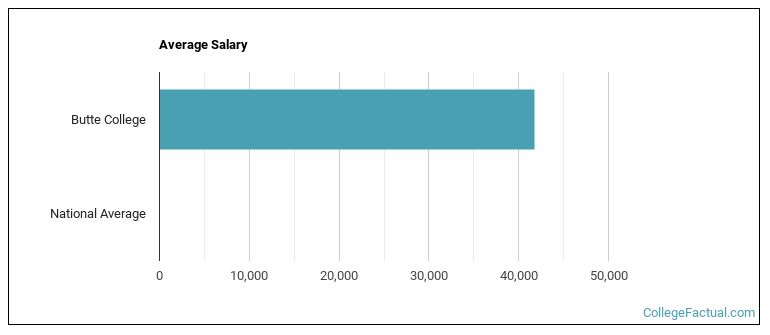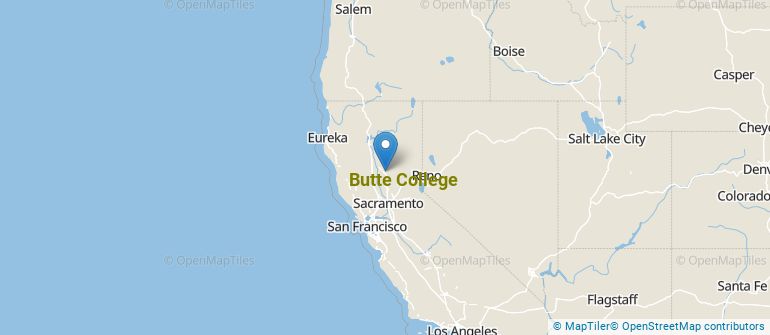 by our College Data Analytics Team
by our College Data Analytics TeamCollege Factual recognizes the best colleges and universities in its annual rankings. These rankings include categories for best overall colleges, best colleges for each major, best value schools, and much more.
Butte College was awarded 44 badges in the 2025 rankings. The highest ranked major at the school is criminal justice & police science.
Explore the best ranked schools for the programs you are most interested in.
College Factual ranked Butte College as #475 out of 2,152 colleges and universities in the country on its 2025 Best Colleges list. This is an improvement over the previous year, when Butte College held the #1,226 spot on the Best Overall Colleges list.
Butte College also holds the #63 spot on the Best Colleges in California ranking.
As long as you meet basic requirements, you should not have any trouble getting into Butte College since the school has an open admissions policy. Still, be sure to submit any requested materials and that your application is completed in full.
The student to faculty ratio at Butte College is 20 to 1, which is high when compared to the national average of 15 to 1. This may indicate that some of your classes will be larger in size than they would be at other schools. However, upper level classes will probably be smaller.
In addition to the student to faculty ratio, some people look at what percentage of faculty members are full-time as a sign of how much time professors will be able to spend with their students. This is because part-time teachers may not be be on campus as much as their full-time counterparts.
The full-time faculty percentage at Butte College is 33%. This is lower than the national average of 47%.
The freshmen retention rate tells us what percentage of first-year, full-time students choose to continue on to their sophomore year at a particular school. The rate at Butte College is 70%, which is about average when compared to the national rate of 68%.
During the 2017-2018 academic year, there were 9,335 undergraduates at Butte College with 3,933 being full-time and 5,402 being part-time.
The net price is calculated by adding tuition, room, board and other costs and subtracting financial aid.Note that the net price is typically less than the published for a school. For more information on the sticker price of Butte College, see our tuition and fees and room and board pages.
Almost 66% of college students who graduated with the class of 2018 took out student loans, but that percentage varies from school to school. At Butte College, approximately 1% of students took out student loans averaging $5,485 a year. That adds up to $21,940 over four years for those students.

Get more details about the location of Butte College.

Contact details for Butte College are given below.
| Contact Details | |
|---|---|
| Address: | 3536 Butte Campus Drive, Oroville, CA 95965-8399 |
| Phone: | 530-895-2511 |
| Website: | www.butte.edu/ |
| Most Popular Majors | Bachelor’s Degrees | Average Salary of Graduates |
|---|---|---|
| General Social Sciences | 292 | NA |
| Human Development & Family Studies | 187 | NA |
| Criminal Justice & Corrections | 179 | NA |
| Allied Health Professions | 178 | NA |
| Practical Nursing & Nursing Assistants | 145 | NA |
| Nursing | 119 | NA |
| Precision Metal Working | 111 | NA |
| Business Administration & Management | 103 | NA |
| Fire Protection | 103 | NA |
| General Psychology | 92 | NA |
Online learning options are becoming more and more popular at American colleges and universities. Online classes are great for students who have busy schedules or for those who just want to study on their own time.
In 2022-2023, 6,464 students took at least one online class at Butte College. This is a decrease from the 7,637 students who took online classes the previous year.
| Year | Took at Least One Online Class | Took All Classes Online |
|---|---|---|
| 2022-2023 | 6,464 | 2,818 |
| 2021-2022 | 7,637 | 4,434 |
| 2020-2021 | 3,077 | 516 |
| 2018-2019 | 3,012 | 889 |
Footnotes
*The racial-ethnic minorities count is calculated by taking the total number of students and subtracting white students, international students, and students whose race/ethnicity was unknown. This number is then divided by the total number of students at the school to obtain the racial-ethnic minorities percentage.
References
More about our data sources and methodologies.